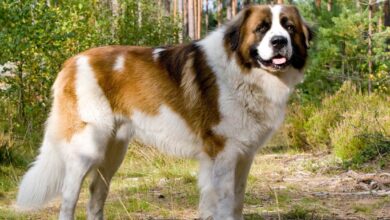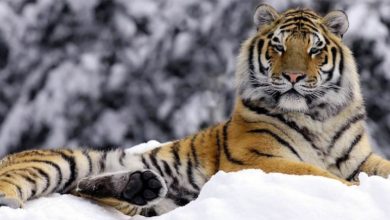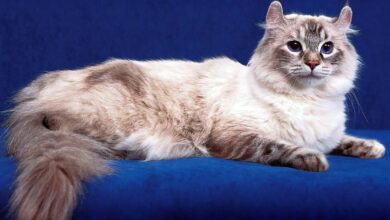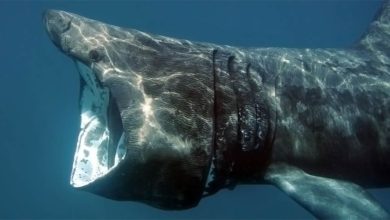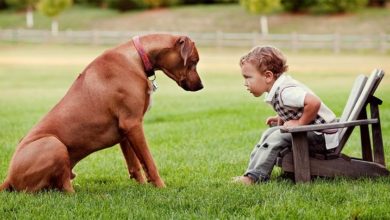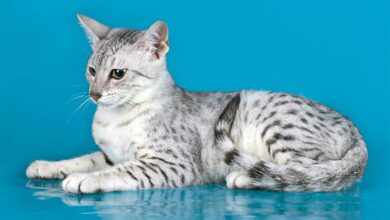Beagle
At first glance, he may seem giddy, but this is just an impression. Beagle is a very alert, energetic but friendly dog. If he finds a good and wise owner, he will be happy with his family and other animals, despite the fact that hunting is recorded in his genes.
FCI Classification
- Group 6: Scent hounds and related breeds
- Section 1.3: Small-sized Hounds
- With working trial

Breed’s history
Dogs of a similar size, which were used for the same purpose as modern Beagles were known in the ancient Greece, what was documented by Xenophon in his Treatise on Hunting. According to this book, Beagles were used to hunt for hares and were very effective thanks to a keen sense of smell.
In the 11th century, Wilhelm the Conqueror imported to the UK a Talbot hound, which was white, slow and had an excellent smell. Talbot hounds started being crossbred with Charts (with the breed Greyhound to be exact) in order to make them faster. From this long and nearly extinct line, a breed Southern hound originated. Those dogs constituted the ancestors of modern Beagles.
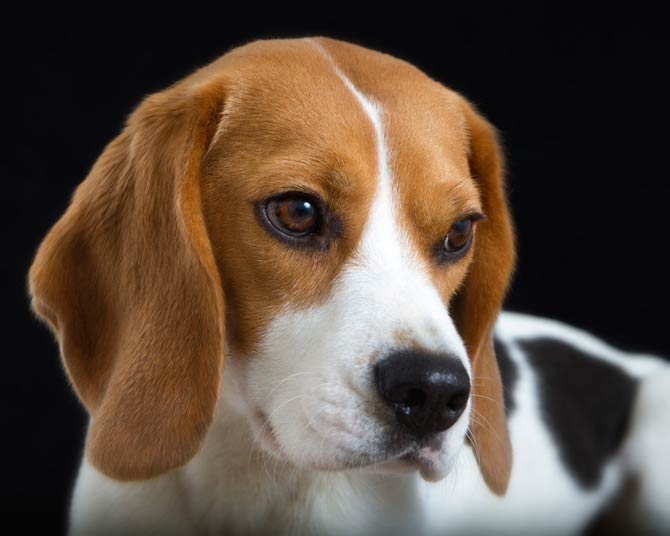
Since the Middle Ages, the word Beagle has been used to describe smaller dogs, although the differences between the hounds of that time and today’s breed by this term are very large. The miniature Beagle was already known during the reign of Edward II and Henry VII Tudor, who called these dogs Glove Beagle because they were small enough to fit on a glove. For this reason, Queen Elizabeth I Tudor called them Pocket Beagle. Their size allowed them to be transported in their pockets or pouches when hunters went hunting. Larger dogs ran after the prey, after which small Beagle were released from their pockets, which continued to chase through the thick thickets. Dogs that belonged to Elizabeth I were also called singing Beagles, because they cheered the guests at (or rather at) the royal table, playing among plates and goblets.
The nineteenth century is closely associated with the medieval Beagle variety and it is likely that the term refers to the same, very small dogs.
A reverend Philip Honeywood owned a couple of Beagles born in Essex in 1830. They are considered a basis of modern Beagles. Although there are no details concerning the line, John Youatt claimed that a majority of Beagles were the dogs of the breed Harrier the origin of which is unknown. Reverend’s dogs were small, approx. 25 cm (10 in) high at shoulders, and they had a white coat. At the same time, Prince Albert and Edward Turnour owned Beagles as well. Thanks to such a significant interest of the royal family, the breed’s popularity started to increase gradually.
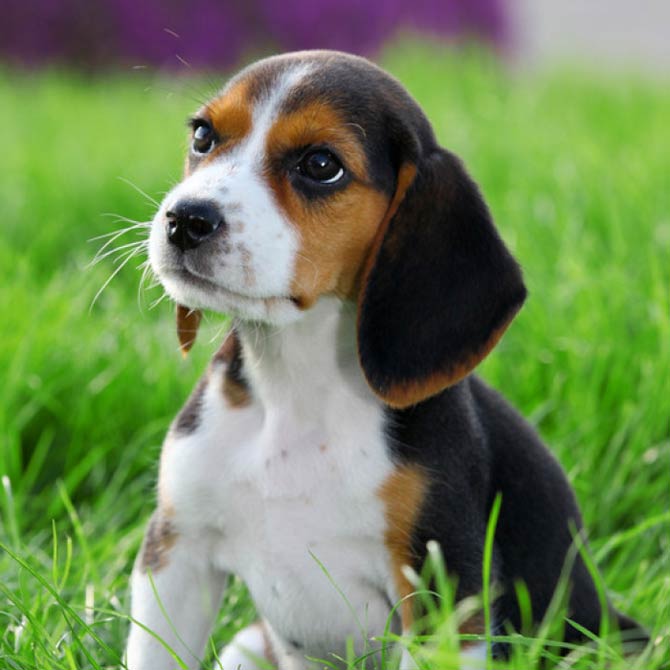
The standard breed type began to develop in 1840, when the differences between the North Country Beagle and Southern Hound varieties disappeared, although there were still plenty of size and characterological variants. In 1856, John Henry Walsh, under the pseudonym Stonehenge divided the breed into four varieties: medium Beagle, the dwarf (or lapdog) Beagle, the fox Beagle (smaller and slower “version” foxhound) and the rough-coated Beagle (in. Beagle terrier ). Thus, Stonehenge gave rise to a breed standard.
In 1887, however, there was a threat of the extinction of the breed, because in England there were only 18 pfs. To save dogs, in 1890 the Beagle Club was founded and the first model was created. A year later, the Association of Masters of Harriers and Beagles was established. The goal of both organizations was to take care of good interests, by the way dealing with breeding. Efforts were not in vain – by 1902, the number of packs increased to 44, the AKC registered the breed in 1884. The 20th century was a time of Beagle spread all over the world.

Characteristic
The overall appearance resembles miniature foxhounds, except that the head is wider, the mouth is shorter, the legs are slightly shorter in relation to the body, and the expression is unique. Usually the dogs measure 33 – 41 cm in height at the withers and weigh 8.2 – 15.9 kg, females are slightly smaller and lighter.
Skull slightly convex, muzzle of medium length, ended with a black, rarely liver, nose. Jaw strong, eyes large, hazel or brown with a gentle hound pleading look. The ears are long, soft, set low, rounded tips touch the cheeks. Beagles have a strong neck, the length of which allows the nose to be close to the ground, making it easier to catch odors.
Chest broad, narrowing to the stomach and short waist; tail curved towards the back when it protrudes. The tip of the tail is white, which is not a coincidence – thanks to this breeding operation, hunters see when the dog catches the lead and lowers the head, thus raising the tail. It is usually kept upright when the animal is very agitated. A muscular body of medium length, covered with a smooth but hard coat. The forelegs are straight and the hind legs are bent at the knee joint.
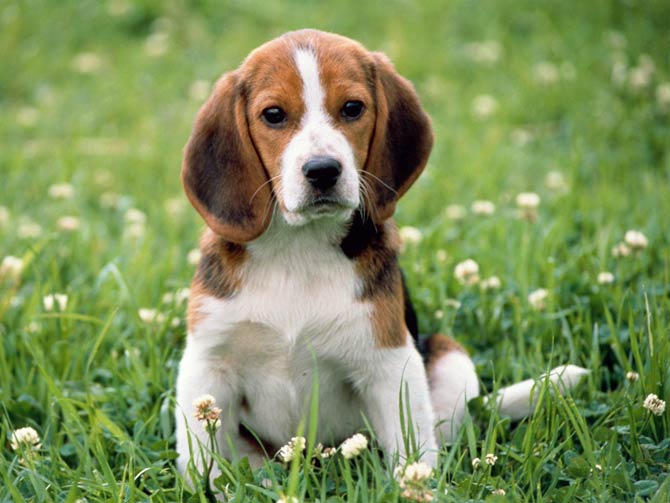
Coloration
There are many color patterns within the breed, however, the most popular is so called tricolor – white base with big, black and light-brown patches. Other color patterns characteristic for hunting dogs occur as well. A bicolor variety has a tan and white coloration. Moreover, there are such color patterns as hare, lemon, uniformly white, red white, black and white, white, lemon, and even light blue.
Sense of smell
Next to Bloodhound and Basset, Beagle has the best sense of smell. In 1950 John Paul Scott and John Fuller started a 13-year research on dogs’ behavior. The analysis included the hunting skills of different breeds. The researchers put a mouse on a surface of 1 acre and tried to determine how long it would take to find a mouse by a dog. Beagles did it in approx. 1 min, Foksterriers in 15 minutes. Scottish terriers were not able to find a mouse at all.
Interestingly, Beagles smell the ground better than the air, which is why they were excluded from mountain rescue for collies, which – in addition to smell – use their eyesight and are more obedient. The anatomical structure of the head helps Beagles catch odors very much – long ears and large lips, probably, retain fragrance particles around the nose.

Temperament
They are characterized by balanced emotionality and gentle disposition. According to many breed patterns, they are usually nice, non-aggressive, but not shy, although a lot depends on individual characteristics. They like company and, although they may show surly attitude towards strangers, they are easy to convince. They are not very well suited for guard dogs, because in confrontation with the intruder they only bark or howl, therefore they are great guardians.
Beagle are intelligent dogs, but as a result of building in their genes a tendency to long pursuit and possession of the target, they can overwork. In obedience tests, they fall out rather poorly, but they respond well to learning by rewarding, in addition, they are very willing to help, but quickly get bored and distracted
They often become great friends of children, therefore they are suitable for a home full of people. You also have to remember that Beagle are herd dogs, so they are prone to so-called separation anxiety. In situations incomprehensible to the dog, he will bark, howl or “speak” (the sound caused by caught gullets of air). In general, he lives well with other dogs, he is not too demanding when it comes to physical activity, but it is important to tire the dog, make him feel calm and fall asleep. Regular exercise prevents obesity to which the breed is prone.
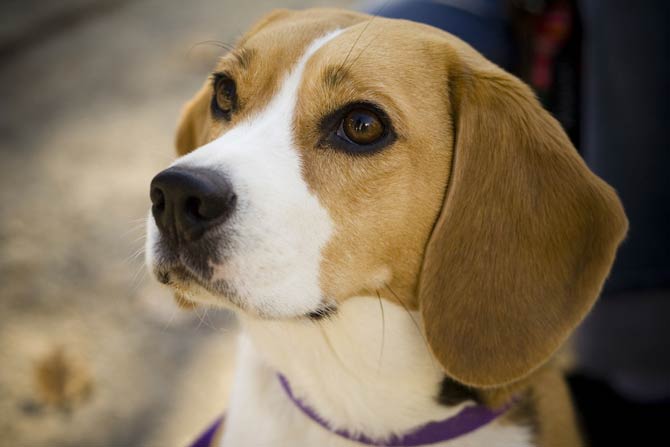
Health
Beagle’s lifespan equals 12 – 15 years, what is common in the case of the dogs of this size.
The breed is prone to epilepsy, however, it could be easily controlled by the drugs. It is also prone to thyroid issues, which may lead to dwarfism. The pups often develop slowly and as a result, they have weak legs, crooked back and become sensible to many diseases. Within the breed, the dysplasia, which constitutes a common problem for Harriers occurs quite rarely.
The disk diseases may occur within the breed. Some specimens may suffer from immune mediated polygenic arthritis, which is treated with steroids.
The long ears may contribute to infections, which result from difficult airflow and humidity leak. They may have problems with the eyes including glaucoma, corneal dystrophy and the cherry eye (third eyelid) as well as distichiasis when the eyelashes irritate the eye because they grow into and the surgery is required. Within the breed, there are several types of retinal atrophy as well as dry eye or leakage of tears which results from the failure of the nasolacrimal drainage system.
As hunting dogs, beagles may get cut or experience sprains. If the dog is not provided with a physical activity, it may get fat (they tend to eat as much as they get). When working outside, they may catch parasites such as ticks, fleas, mites, and tapeworms. They may get hurt in the eyes, ears or paws due to sharp plants or flying seeds. In Beagles may be observed a specific behavior called reverse sneezing, in which the dog acts like it is choking and trying to gasp for the breath when it actually takes a breath trough its nose and mouth. The reason for this behavior is uncertain, however, it is not harmful.
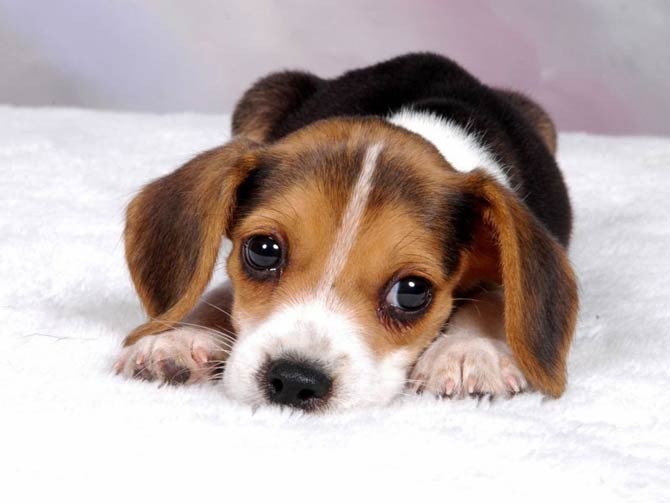
Detailed information / size
- Height at shoulders: 33 – 41 cm (13 – 16 in), females are a bit smaller
- Weight: 8.2 – 15.9 kg ( 18 – 35.5 lb), females are a bit lighter
- Lifespan: 12 – 15 years

Beagle – curiosities
- The name beagle was mentioned for the first time in the 15th century, however, the origin of the word is unknown. It is suggested that it may originate from a French word beguele (open throat) or from the Old English, French or Goidelic and means ”small”. It is possible that the name came from French word beugler (”yell, roar”)
- According to Stanley Coren’s ranking of the most intelligent dogs, the breed takes the 72nd Coren described the breed as the least obedient and intelligent. However, the ranking does not take into account such skills as understanding, level of independence and creativity.
- The dogs similar to Beagles have existed for more than 2000 years
- From the Talbot breed, originated the breed Bloodhound (St Bernard’s dog), which became extinct in the 8 th century
- The breed has been presented across such disciplines of culture as literature, art, movies, tv series and comics, the perfect example of which constitutes Snoopy – a Beagle from the comics Peanuts. Snoopy is the most popular Beagle in the world.
- Beagles were used to hunt for hares, which were called beagling. They also worked on detecting food in the baggage (mainly in the USA). Moreover, due to a docile personality and an eligible size, the breed was used in drug testing research. In Australia, they are used to detect termites and after the earthquake in Haiti in 2010, they helped Colombian emergency service to find people who had gone missing.
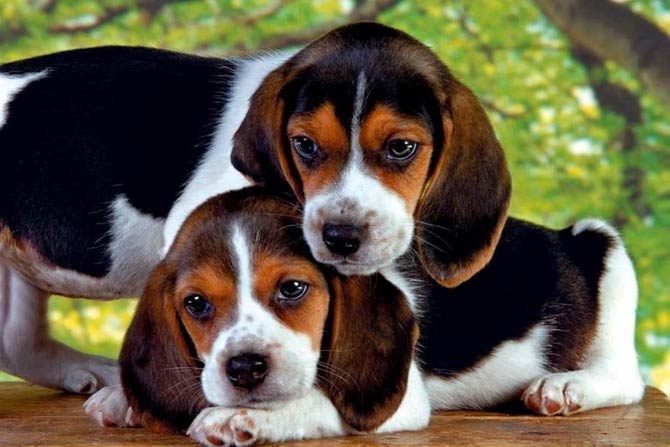
Recommended
- Pets
- Dogs
- The smartest dogs
- The tallest dogs
- The most aggressive dogs
- The oldest dogs
- Cats
- Wild cats
- The fastest animals
- The fastest birds
- The largest eagles








